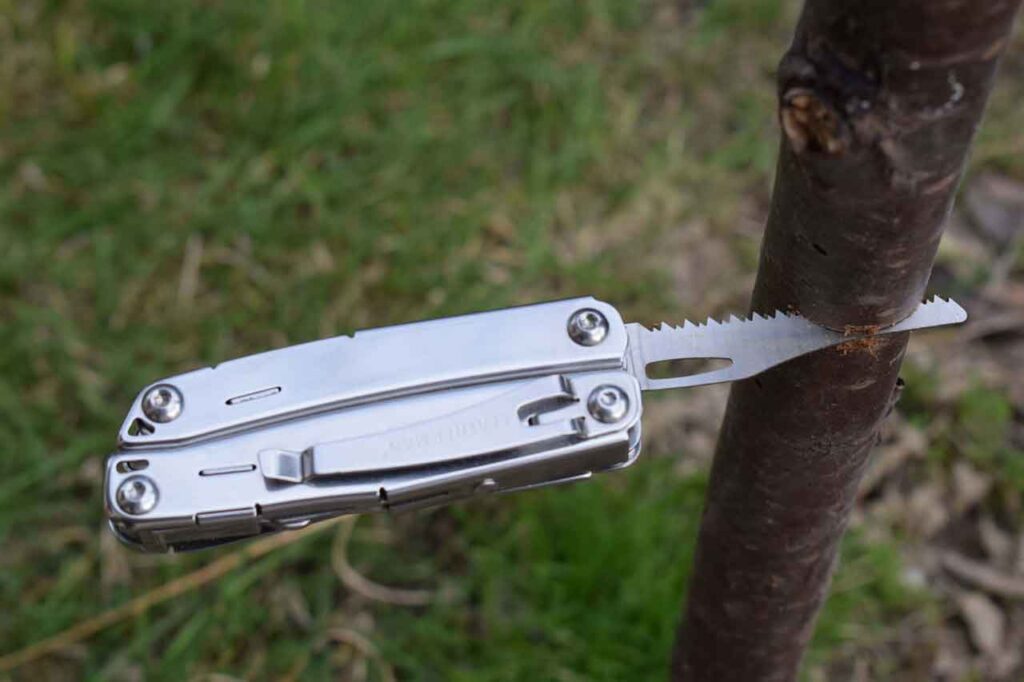Best Survival Cutting Tool
Following up on the principle of the 5 C’s. Pick the perfect cutting tool for you. The best cutting tool in a survival-type situation is the one you have on you, but if there is an option of what to pack as a survival tool. Do so wisely, and choose the tools most suited to your environment, that you know how to use.
It is best to have multiple survival cutting tools, relying on just one would be foolhardy. I recommend a minimum of 2, one for hard-use tasks (taking down trees, preparing firewood), and another for finer detailed work (feather sticking, preparing traps, and processing game).
Best Survival Knife
In the majority of outdoor survival situations, the best survival cutting tool will be a knife. But no knife is going to excel at everything, specialized knives perform better at what they were designed for. A hunting knife will be better at processing game, a bushcraft knife will be better at processing wood. BUT….that does not mean that a hunting knife is unable to carve wood, it just means it will take a little bit more effort, and vice versa with a bushcraft knife.
Dry Climate Bushcraft Knives
A survival knife needs to be durable, sharp, and comfortable to use. It must be a fixed blade, a full tang knife that is easily sharpened in the field. In a dry climate, a 1095 high carbon steel knife like ESEE produces fits the description perfectly. As do Mora knives. The shape of the blades and scandi grind make ESEE and Mora knives the perfect choices for survival in a dry environment outdoors. The ESEE and Mora are superb at wood carving. Feather sticking, whittling, and setting up traps.
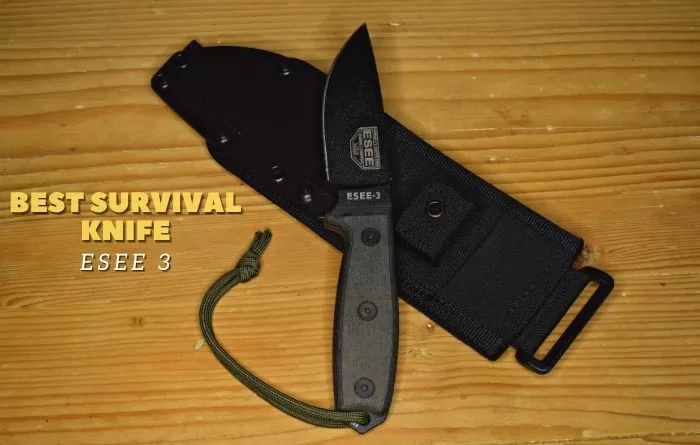
Humid Climate Hunting Knives
In high humidity, coastal or swampy country, a stainless steel knife is the preferred choice. 440HC or S30V such as those produced by Buck or Benchmade. A hunting knife was the preferred knife of choice for pioneers and explorers in the past. And if they had gotten their hands on a knife like the Buck 119 or the Benchmade Saddle Mountain Skinner, I am pretty danged sure they would have been happy as a chipmunk on a peanut farm.
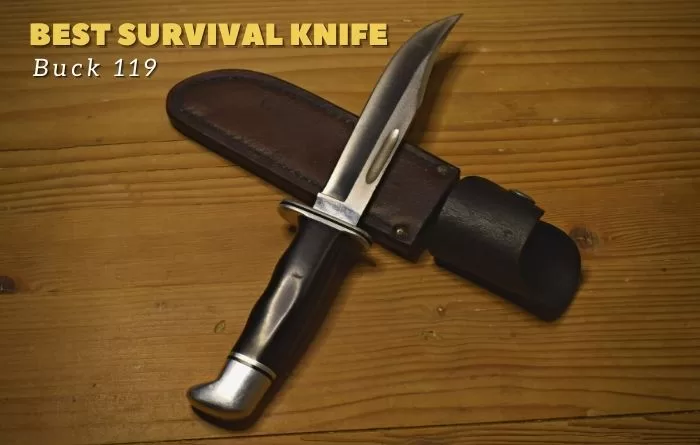
Best Survival Axe
The best survival axe is small enough to carry in a backpack or on a belt, but heavy enough to cut down small trees and to be used for splitting firewood. The axe should have a decent beard for choking up on and carving with, and yet be sturdy enough to limb branches. In other words, it needs to be a jack of all trades. Which means it will be a master of none. A survival axe will not be as good at carving as a carving axe or as good at splitting wood as a maul. But it will be able to do both efficiently if not perfectly.
In a pinch, a survival axe can be used to dress game, process food, chop, split and carve wood. I have even seen people shave with their survival axe (although I think that is a little gimmicky).
Amongst all the axes I have ever used in the outdoors, One brand stands out. Gransfors Bruk. The best models for survival are the Gransfors Bruk Wildlife Hatchet (small, compact, and light) or the Gransfors Bruk Small Forest Axe (heavier head with a longer handle for more chopping, and splitting power). A quality product, but quite expensive.
For those on a budget, the Fiskars X10 is the Mora of axes.
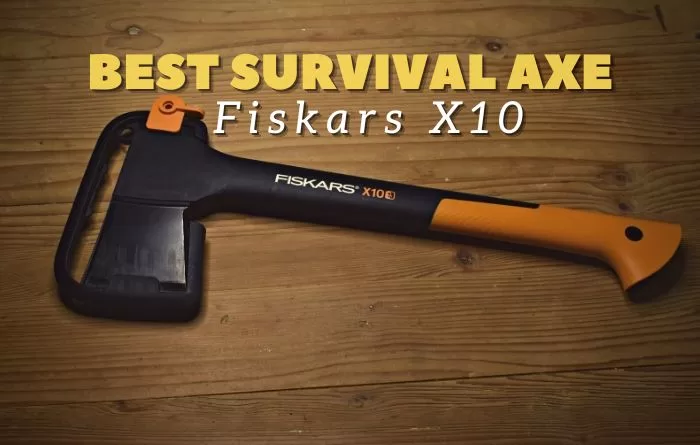
Best Survival Machete
A machete outperforms an axe in jungles and swamps. Machetes can be used to clear a path, cut down and limb small to medium trees, and cut wood for shelter or fire. And even be used to whittle feather sticks.
A machete is halfway between a knife and an axe. It is the best survival-cutting tool for jungles, swamps, and marshland. Which explains its popularity in Asia and South America.
The best survival machetes are made by Tramontina and Ontario knives. These are authentic machetes. Designed for work, they may not be pretty, but they get the job done.
Some people think of a machete as a large knife. And if you are a fan of that kind of machete, then you will love the traditional Kukri or ESEE’s Junglas. They are both heavy and solid machetes. And unlike the Brazilian style, machetes are not at all flexible.
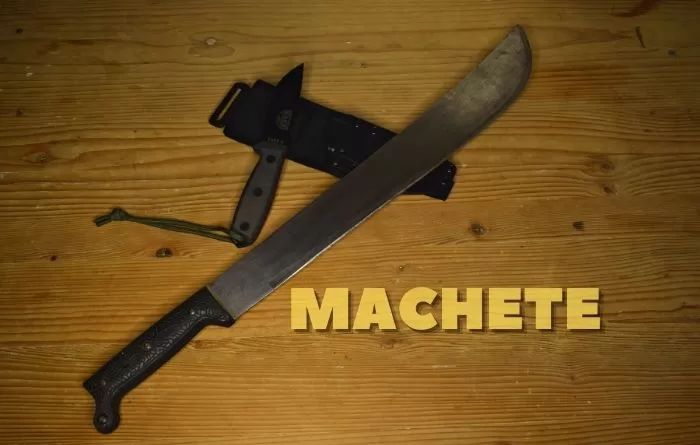
Best Survival Saw
Survival saws are highly effective in woodland terrain, they are compact and lightweight. Some models are small enough to fit in cargo pants pockets. The best folding survival saw is the Bahco Laplander, and running in at a close second is the Silky Gomboy.
I know many people are going to disagree and say it’s the other way around. But the Laplander wins on durability. The Gomboy does cut better, but the blade is more fragile, and in a survival scenario, durability trumps ease of use.

Summary:
In a true survival situation, skills and tools will mean the difference between surviving and perishing. A skilled outdoorsman (survivalist) will be able to make do with the barest minimum of tools. But if you asked them, they would rather choose to have the right tools for the job, than do without.
If you are preparing a get-home bag, bug-out bag, or throwing some survival gear in your vehicle. Always carry a combination of cutting tools.
Personal Preference:
I prefer a machete to an axe most days, but in a 4 season country, an axe is more practical for processing firewood.
Temperate/Tropical Climates
The Buck 119 and a Tramontina machete, this was what I carried with me when I was a young un for a couple of decades worth of hiking and camping, through jungles so dense that some days you could barely see the sun. The best survival cutting tool in the jungle is without a doubt a machete.
Woodland 4 Season
The ESEE 3 and Bahco Laplander for 3 seasons of the year. During winter I add the Fiskars X10 to my kit. I carry the Fiskars, but TBH, other than splitting the occasional log, I have barely used the axe. So far the ESEE 3 and saw have been enough. But in winter, why mess around, it’s always better to have it and not need it, than need it and not have it.
Folders And Multi-tools
Multi-tools are great, I love them and since I started carrying one, I find myself using it daily, the same as folders, I EDC both. And in a survival situation, they do have their uses. For whittling, kit repair, and food prep.
But if I had to choose 2 survival cutting tools. A multi-tool or folder would never be one of the 2 I choose. They would always be that little extra on the side that I carry in my pocket.
No matter how well made or hardy a folder and multi-tool are advertised to be, they can never beat a full-tanged knife, machete, or axe in a survival situation. But if you are planning to carry that little bit extra in your pocket. I highly recommend the Leatherman Sidekick and Buck Selkirk. Both have served me well.
